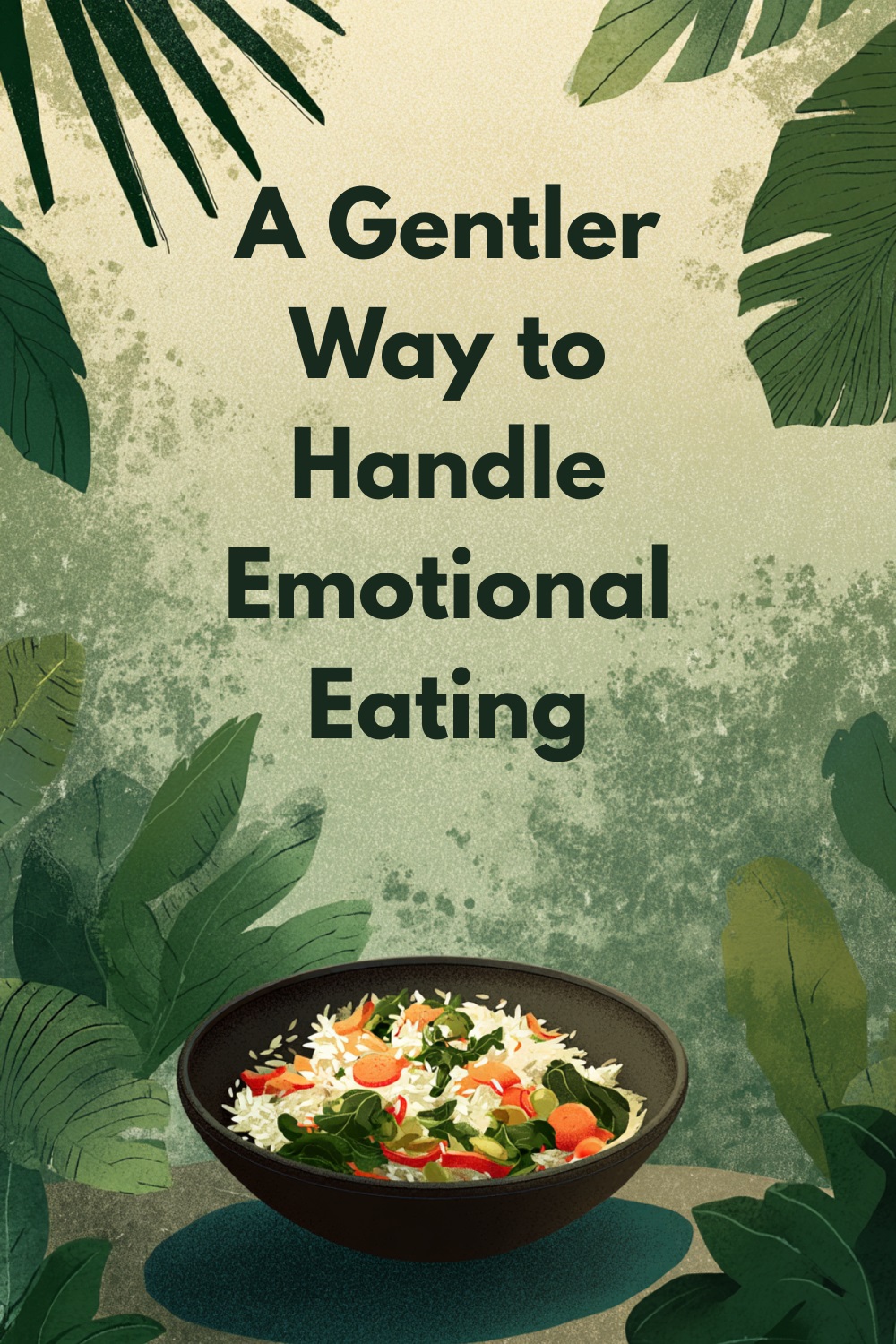Emotional eating isn’t about lacking willpower. It’s about needing comfort, relief, or escape – and food being the easiest way to get it.
And while eating for comfort sometimes is completely normal, for a lot of people, it turns into a cycle. You eat to cope, feel out of control, then try to fix it with a rigid plan that doesn’t last.
This article is for people who are stuck in that loop. You don’t want to keep eating emotionally, but you also know strict rules don’t work for long.
Here’s how to take a more mindful, realistic approach.
1. Understand That Emotional Eating Has a Purpose
You’re not doing this because you’re broken.
You’re doing it because food helps in the moment. It numbs, soothes, distracts, or comforts. That’s not weakness – it’s a coping strategy.
And like all coping strategies, it works… until it doesn’t.
So instead of going straight into “fix it” mode, start by being honest about what the behavior is doing for you.
That’s how you start to change it.
2. Focus on Noticing Before You Try to Stop
Don’t try to shut it down right away.
Instead, get curious. What kinds of moments tend to trigger the urge to eat emotionally? What are you usually feeling before it happens?
You don’t have to fix it right now. Just observe.
This builds awareness, which is the foundation for all habit change.
3. Create a Pause – Even a Small One
You don’t have to stop the behavior. Just slow it down.
That might look like sitting for 30 seconds and asking yourself:
- What am I feeling?
- What do I need right now?
- Is food going to help with that?
Even if you go ahead and eat anyway, that pause gives you a little space. And that space is where new choices start to happen.

4. Ditch the All or Nothing Mindset
The usual path looks like this: You eat emotionally. You feel guilty. You swear to “cut out sugar and carbs and snacks” tomorrow. That lasts two days, then you fall back into old patterns.
Instead, aim for progress, not perfection.
You don’t have to completely stop emotional eating to make progress. If you notice it earlier, eat a little less, or feel less out of control – that’s already a win.
Let go of the idea that you have to do it perfectly.
5. Focus on Soothing, Not Just Swapping
You’ll hear a lot of advice like “take a walk instead of eating” or “have a cup of tea.”
That only works if the alternative actually helps.
So ask yourself: what am I hoping food will do for me right now?
Then get creative. If you’re lonely, maybe you need connection. If you’re overwhelmed, maybe you need quiet. If you’re anxious, maybe you need to move your body or write something down.
Create a list of things that help you feel better – not just things that sound healthy.
6. Don’t Let Hunger Make It Harder
This one’s practical but important.
When your body is underfed or running on empty, emotions hit harder. Your brain is tired, your blood sugar is low, and comfort food starts calling your name.
Eating consistent, satisfying meals gives you a stronger foundation. It doesn’t prevent emotional eating completely, but it helps you feel more steady.
Make sure you’re eating enough during the day – especially earlier on. It makes a big difference.
7. Reflect After, Not Just Before
If you do eat emotionally, don’t shut down or beat yourself up.
Use it as a moment to learn. Ask yourself:
- What was going on before that?
- What was I needing?
- What helped and what didn’t?
This is where mindfulness really helps. It’s not about control. It’s about staying connected to what’s actually going on – before, during, and after the behavior.
That’s how you build a different relationship with food. Not through force. Through understanding.
Final Thoughts
Emotional eating isn’t something you need to punish yourself for. It’s something you can learn from.
Instead of jumping into a strict food plan that doesn’t leave room for real life, try slowing down and getting curious.
Start small. Notice what’s really happening. Create a little space to pause.
And above all, give yourself permission to take a gentler path.
Control doesn’t come from restriction. It comes from understanding.

